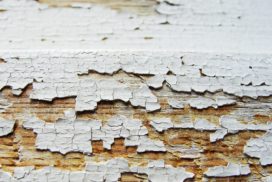Surface conditions vary. So should your primer.
Getting the surface properly prepared and primed is a key factor in whether a paint job lasts and lasts or fails quickly.
Different surfaces need a primer that is formulated to perform under their specific needs. Below is a list of painting conditions you may run into, and the best way to get them ready for top coating.
- First you always want to take lead safety into account, especially around young children and pregnant mothers. This information is readily available on line or your local paint store.
- Read labels and follow directions and safety instructions
- Cracked and peeling paint: The best way to restore this surface is to completely remove the old paint by stripping with heat or chemicals. However this is time consuming messy and expensive. Another way to go is to remove the loose paint by scraping, and sanding. Then prime with a clear bonding sealer specifically designed for this type of surface. It will penetrate the cracks, and glue the old paint down, while leveling out the irregular surface some for top coating.
- Damaged drywall: When you go over these areas with some water based primers, paints, and patching compounds; many times the moisture gets under the layer of paper activating the glue and making bubbles on the surface. To avoid this, use shellac or oil based primers which will not react with the adhesives. For large severely damaged areas, clear sealers similar to the ones made for peeling paint work best.
- Dark colors over light colors: Use a deep tint primer tinted as close as possible to the color of your top coat.
- New un-painted wood: Always lightly sand with a fine grit sand paper to get rid of any mill glaze. This happens when the natural adhesives in the wood react to the heat from the saws and planers forming a film on the surface which keeps paint from penetrating the wood grain and bonding.
- Previously painted trim: was it oil or latex? Its better not to mix the two. If you don’t know what was used before it’s a good idea to use a primer formulated to stick to both. You’ll be safe with oil or latex for your top coat.
- Smooth shiny surfaces: sand to a dull surface and use a bonding primer.
- Fire smoke and water damage: Any soot stains should be cleaned with detergent and primed with shellac based primer. This will not only bond to the surface but also seal out odors. Water stains can be sealed with either oil or latex primers the shellac being the best. Don’t be fooled by latex primers claiming to seal water stains.
- Mildew: Apply solution of 3parts water to 1part bleach. Keep wet for 20 minutes and rinse thoroughly.
- Rust: Completely removing rust with power tools is best, but as long as all the loose material is scraped off you can wire brush the remaining areas and apply oil based corrosion resistant primer. Again don’t be fooled by latex corrosion resistant primers.
Make sure surface is Clean, Sound, Dull, and Dry before priming.
Always use high-quality primers and top coats the few dollars you save will cost you later.

